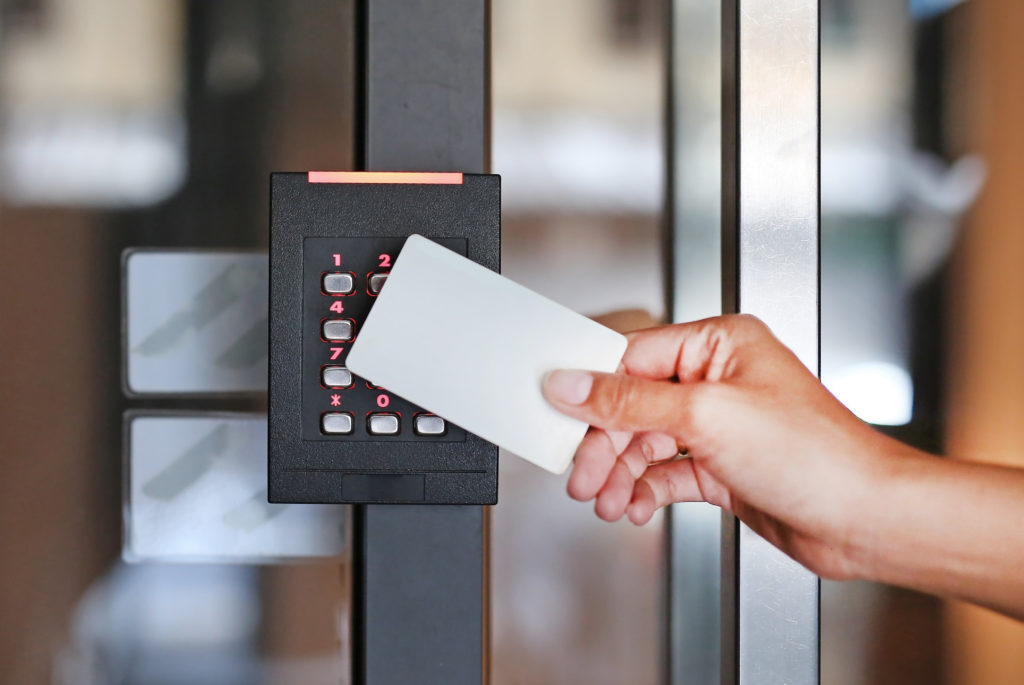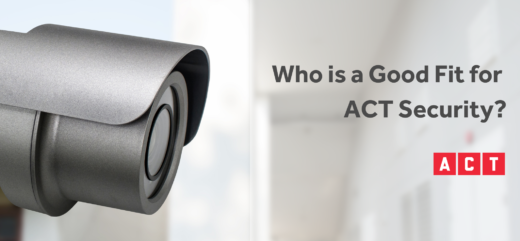By Randy Mann
08/29/18 · Last Updated 08/22/18 · 4 minutes to read
Designing and constructing a new building takes meticulous planning from both the architect and the business owner. Together, you must understand how the space will be used, what the mechanical, plumbing and electrical needs are, what traffic flow will look like, and equally important, how to keep the people and property safe and secure once occupied.
Making safety and security decisions, and understanding your options with the help of an experienced security contractor at the design stage helps to ensure that the building is both safe and easy to use. A good security discussion during building design should help in determining construction choices for providing the technology that best serves your building and culture. Waiting until construction design is complete means security technology must be adapted to the earlier decisions – and by then, the options left aren’t always the best.
One important security decision to consider including in the early design conversations is electrified door lock technology. Door locks impact both security and fire and life safety systems. Instead of fitting a door lock to an existing plan, or replacing materials to install appropriate technology, knowing which door lock is best before the construction starts saves time, money and provides peace of mind.
Considering NFPA codes when choosing door lock technology
Before you determine which lock is best for your building, you should review and consider pertinent National Fire Protection Association (NFPA) codes.
For example, NFPA 101 is often referred to as the Life Safety Code. Pertinent to locking hardware, this code addresses building egress provisions to help ensure that building occupants can exit safely. NFPA 80 addresses fire doors and other protective openings. This code should also be consulted for determining what is permissible when altering rated doors in a retrofit situation.
These codes can directly affect choices in both installation techniques and lock hardware, including even where and how it is permissible to control traffic in interior spaces such as elevator lobbies.
The Life Safety Code also indirectly addresses what door lock function should be used for a particular egress location. A qualified security contractor is well versed in these necessary codes and can help you understand how to keep your building safe.
Three types of commercial door lock technology

Once you know what your structure requires, it’s important to understand the differences in door lock technology. There are three primary types of electrified door lock technologies, each with differing strengths, uses, limitations and restrictions.
1. Electric strike control
Electric strikes use an electrical component providing the ability to remotely release a door. The electric strike control was originally created in the late 1880s so New York City high rises could have a locked common entry door, allowing residents to remotely grant access (think Seinfeld) and physically unlock the door from the inside with an automatic relock.
Today, there are several styles of electric strikes. The basic style is the recessed electric strike (a metal plate or assembly) mounted into the doorjamb to receive a latch or bolt and hold it secure. The strike holds the bolt in place keeping the door secure until the strike is released via a release switch, keycard or other credentials.
When it comes to building design, it’s important for businesses owners to know that codes may preclude electric strikes being permissible for use in stairwells.
Stairwells are often a primary area of refuge in regards to life safety. When so specified, doors going into a stairwell must have a positive latch – a spring-loaded throw on the edge of the door to engage in the strike plate of the door frame. This prevents the pressure caused by a fire from pushing the door open and allowing smoke and flames to spread into the stairwell.
Because the fire marshal may require free ingress for emergency response personnel to travel freely from the stairwell into the occupied space releasing an electric strike removes the positive latch so they should not be used in that environment.
2. Electromagnetic lock
An electromagnetic lock, or mag lock, consists of a large electronically powered magnet that is installed in or on the door frame and a metal armature plate secured to the door to line up with the magnet. When electrical power is supplied to the magnet, it creates a magnetic charge that keeps the magnet connected to the metal plate. This holds the door securely in place until power is turned off or interrupted.
Since mag locks require power to create the magnetic bond, the door is effectively unlocked in the event of system or power failure. Although backup batteries are typically used in these situations, these batteries eventually fail and introduce another maintenance concern.
This is an important consideration to keep in mind when choosing the type of door lock technology. Because mag locks fail open, they are best used on interior doors for traffic control instead of a security control on perimeter doors.
While fairly low maintenance and easy to install, mag locks are metal and exposure to the elements can result in oxidation and film build-up causing the magnetic bond to weaken. With enough force, the door can be pulled open, which creates a security issue.
Contrary to popular belief, mag locks are not maintenance free. They should be included as part of a maintenance program to include cleaning and testing for full functionality.
3. Electromechanical lock
Electromechanical locks are a blend of traditional mechanical locks and conventional key card access control systems. Electromechanical door locks include typical mechanical – lever or panic bar – actuators but utilize electricity for lock/unlock function and are controlled by a variety of electrical impulse-generating equipment such as a keypad, card reader or timer.
As with the other door lock technology, electromechanical locks empower users by giving them the ability to control their own system and electronically control access. These types of locks may include sensors to monitor and audit the bolt and handle position, request to exit, door status and more.
In a failed state (loss of power), electromechanical locks can be configured to remain locked from the outside while still permitting egress in compliance with Life Safety Code 101. Some lock manufacturers even include proximity readers in the lock trim so that all functions (reader/REX/Lock Power/door position switches) are accommodated through one conduit path, which significantly reduces infrastructure expense. These locks can also be configured with keyed cylinders to allow them to be opened mechanically in the event of a system failure.
Deciding on the right locks for your business
Feeling confident in which door lock is right for your building can seem overwhelming. Pair that with fire and life safety codes, updates in technology and construction requirements, and it’s a lot to consider.
Building owners will be affected by many design choices long after construction is complete. A knowledgeable security contractor understands the necessity of good design, and that a thoughtful plan produces successful security, safety, and accessibility results.
Are you ready to include security in your building design? We’re ready to share our knowledge and help you create a plan for your individual door lock – and security – needs. Contact us to get a free assessment of your building’s needs.


